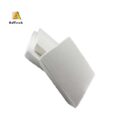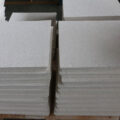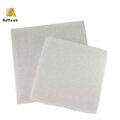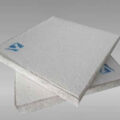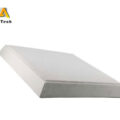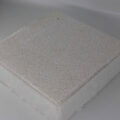Ceramic foam filter for molten aluminum is used to capture and retain high-alumina liquid slag, other metal oxide slag and other entrained particles.
Ceramic Foam Filter for Molten Aluminum is expected to have better performance than filters due to their tortuous fluid flow paths. In a screen filter, it is difficult to retain slag. Even if liquid inclusions can easily wet the filter material, they are also easily deformed by the flowing aluminum water and flow down the filter wall to the outlet. Normally, the filter will coalesce many small slag inclusions and release them as larger inclusions back into the flowing aluminum.
Ceramic foam filters are widely used for metal filtration. Filters are usually formed by sponge replication technology, in which polyurethane foam is coated with ceramic slurry, then dried and fired. During the firing process, the polyurethane foam inside evaporates, and the ceramic particles in the slurry combine to form a continuous network of ceramic pillars, thus forming an exoskeleton-like foam structure, which can certainly replicate the original polyurethane foam.
The filter is usually sprayed with mud after the first drying step, which tends to soften the surface of the filter. Therefore, it must be handled very carefully so as not to damage the surface. Before inserting the filter into the furnace, an additional drying step may be required.
The spray filter can also reduce the size of the surface pore window and can completely close at least a part of the pore. This may cause problems when the molten aluminum passes through the filter primer first, and may prevent the flow of aluminum after the primer of the aluminum filter. If the average window size of the pores is too small, or the volume fraction of surface porosity is too closed, the filter may not be primed or only partially primed, and the flow may be restricted to unacceptable levels. Since spraying will change the pore structure of the surface, uneven coating of the coating will cause a significant change in the pressure required for the primer filter, the success rate of the complete primer filter and the partial primer, and the metal removal from the filter. The flow rate is filtered.

